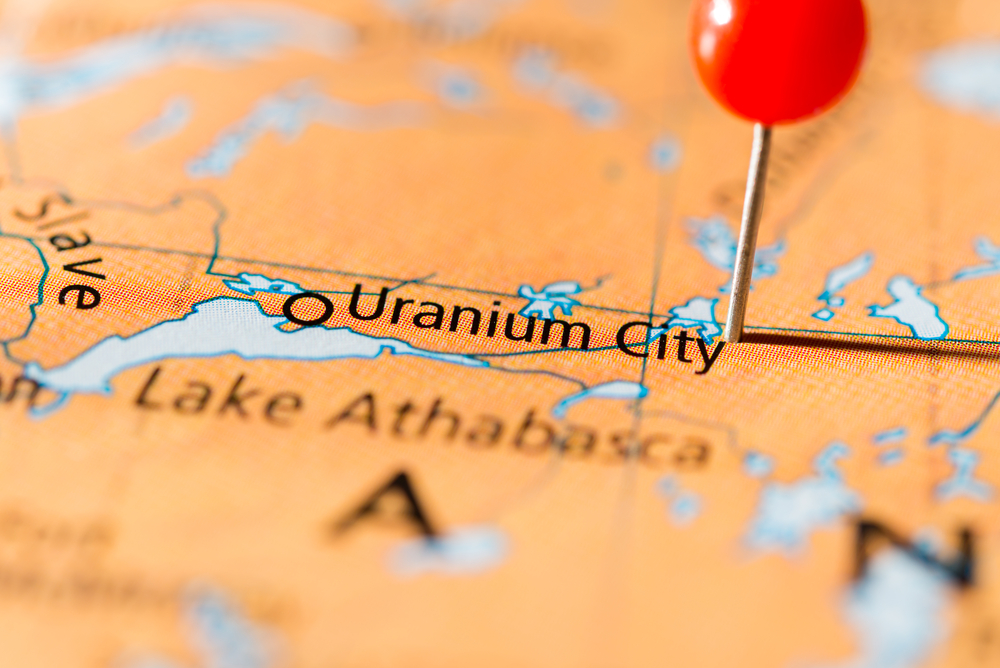Data centers are expanding at an unprecedented pace, driven by the need to build and train more AI models by the day. But here’s the shocking truth: AI-driven applications like ChatGPT consume 25 times more energy than a simple Google search. This will translate to datacenters worldwide consuming as much energy as Japan in 2022.
And this is only the beginning. The global energy demand from AI is projected to triple by 2030, increasing from 1% to over 3% of total electricity consumption. To meet this rising demand, a reliable, scalable, and environmentally sustainable solution is becoming the go-to for tech companies and governments: nuclear power.
The World Nuclear Association reports that 10% of the world’s energy already comes from nuclear sources. And here’s the game-changer: over 40 countries are committed to tripling their nuclear energy production by 2050.
This commitment underscores a growing need for uranium, the fundamental fuel for nuclear reactors. Each reactor coming online adds more pressure to an already tight supply.
As nuclear energy surges to the forefront of the global energy agenda, Canada stands at the center of this transformation. With 14% of the world’s uranium production, cutting-edge nuclear expertise, and a government committed to energy leadership, Canada might have what it takes to become the backbone of uranium mining.
The Uranium Supply Crunch & Canada’s Role in the Global Uranium Market
A potential supply shortage is looming in the uranium industry. Kazakhstan, the largest uranium producer, faces operational challenges that could limit global supply. With demand on the rise and supply constraints mounting, the market experienced a shortfall of 30-40% million pounds of uranium in 2024.
This places Canada—the world’s second-largest uranium producer—in a unique position. The Athabasca Basin, located in northern Saskatchewan, Canada, contains the highest-grade uranium deposits on the planet, over 100 times the world average, giving the country a chance to claim the number 1 production spot.
Canada is home to some of the most established uranium companies, including Cameco, alongside many promising junior mining firms. These producers will be key in ensuring a stable uranium supply as nuclear energy adoption accelerates after nearly two decades of underinvestment.
Industry experts recognize Canada’s strategic advantage. Professor Markus Piro, a nuclear engineering specialist at McMaster University, affirms: “We’ve got a one-stop shop here in Canada. Not every nation’s like that.”
Even Canada’s Energy and Natural Resources Minister, Jonathan Wilkinson, has reiterated the country’s leadership, stating: “Canada is the only G7 country able to supply uranium to fuel reactors across the globe, and we export over 80% of our production.”
The Bullish Case for Uranium Prices
Several key factors are driving a bullish outlook for uranium prices:
- AI-driven energy demand is soaring as Big Tech companies continue to develop more advanced models.
- Global nuclear expansion is accelerating, with over 440 reactors operational and 65 in the pipeline.
- U.S. bans on Russian uranium imports and other political conflicts around the world have tightened supply even further.
- Major production bottlenecks persist after the world’s top producers fail to meet targets.
The result? Uranium prices are primed to surge. Analysts predict a return to historic highs, with projections soaring to $100/lb. And with Canada planning to double its uranium output by 2035, the country is set to become the most important player in the nuclear energy boom.
With the increasing reliance on nuclear power for AI-driven energy needs and broader electrification goals. For those involved in the energy sector, understanding Canada’s unique position in uranium mining is key to anticipating the future of nuclear power.


